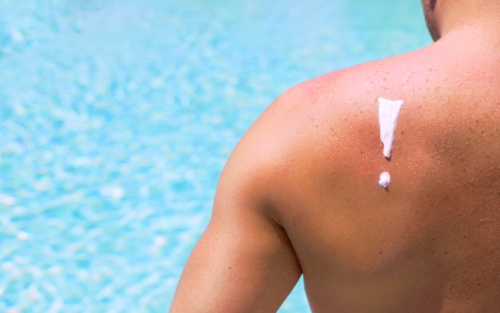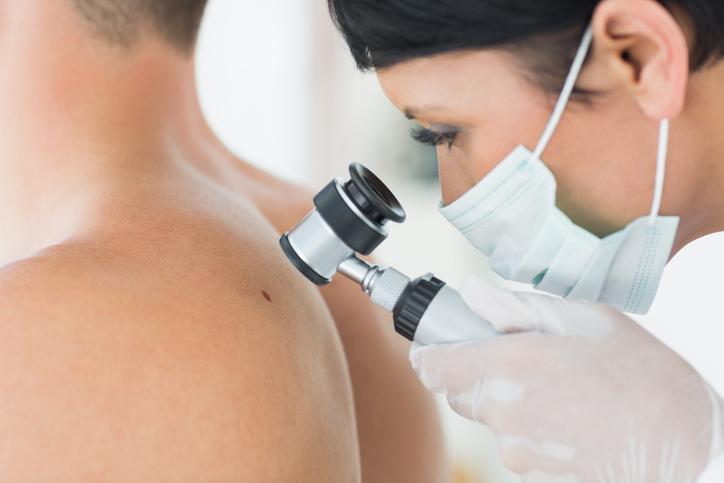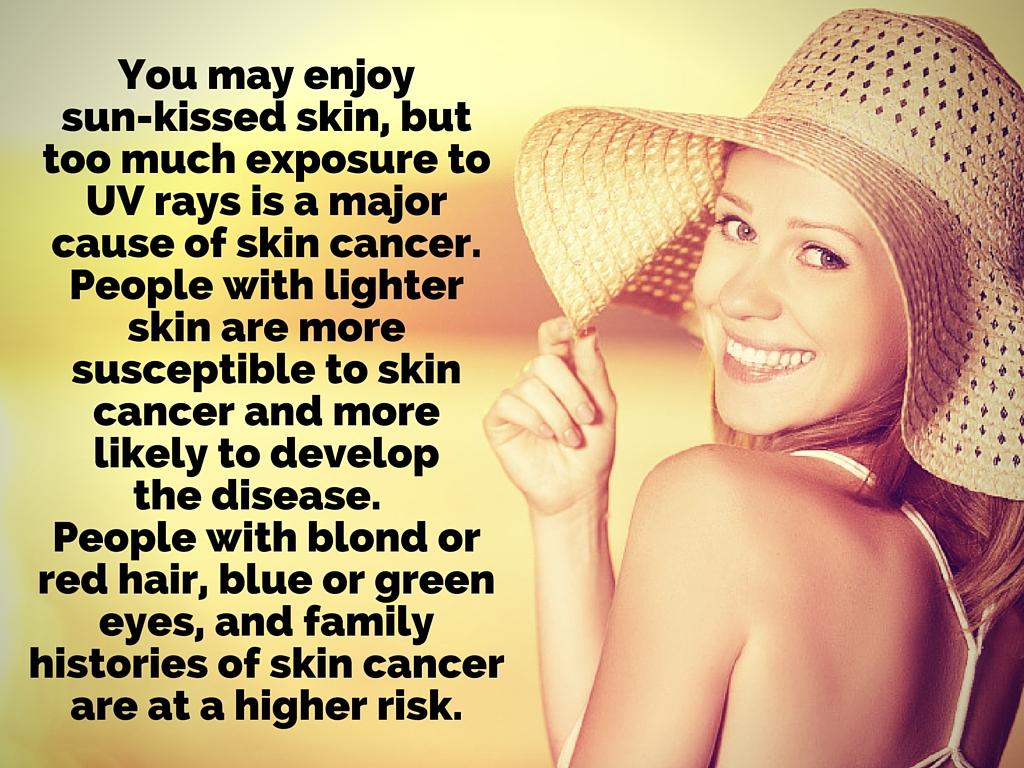 With the start of the summer coming up, there’s no better time to talk about skin cancer prevention.
With the start of the summer coming up, there’s no better time to talk about skin cancer prevention.
May is Melanoma/Skin Cancer (1) Detection and Prevention Month, and raising awareness about skin cancer is crucial to help people fight this disease and lower the number of people diagnosed each year.
Some types of cancer are almost impossible to prevent, and some cancers are more dependent on factors such as genetics, which cannot be avoided.
However, other types of cancer have risk factors that can be avoided with lifestyle changes. Skin cancer is one of them. There are a variety of steps you can take to lower your risk of developing skin cancer.
What Is Skin Cancer?
Skin cancer is the most common type of cancer, affecting millions of Americans each year. By its nature, skin cancer can develop almost anywhere on the body, but there are certain areas where it’s more likely to appear. In men, skin cancer often affects the chest and back, while women are more likely to get skin cancer on their legs.

Generally, skin cancer (2) is easily treatable when caught early. However, there are three different types of skin cancer, one of which is deadlier than the others. The most common types of skin cancer are basal cell and squamous cell carcinomas, and both usually very treatable, but the third type of skin cancer is melanoma, which is rarer but also more likely to spread. Catching the cancer early is crucial for effective treatment and recovery.
What Causes Skin Cancer and What Are Skin Cancer Risk Factors?
Most cases of skin cancer are caused by exposure to ultraviolet (UV) rays; the biggest source of which is, of course, the sun. The sun’s UV rays penetrate the skin, causing damage and increasing the risk of skin cancer. Tanning beds and sun lamps are also common sources of UV radiation. Tanning, sunburns, freckling, and moles are all signs of UV damage or exposure to sunlight, which can mean an increased risk of skin cancer.
While exposure to UV rays is the major cause of skin cancer, genetics do play a part as well. People with lighter skin are more susceptible to skin cancer and more likely to develop the disease. As well, people with blond or red hair, blue or green eyes, and family histories of skin cancer are at a higher risk.
Skin Cancer Symptoms
It’s important to catch skin cancer early, which is why you should be aware of skin cancer symptoms, as they can sometimes be hard to notice. Some of the most common symptoms are:
- The appearance of a new growth on the body;
- A mole that grows or changes in size, shape or color;
- A sore that doesn’t heal; and
- The appearance of lumps or scaly patches of skin.

Watch out for the appearance of a new growth or mole on the body.
By regularly performing a skin cancer screening (3) and checking your body for any abnormalities, you can detect skin cancer in the early stages and have better odds for treatment.
Skin Cancer Prevention Tips
If you want to lower your risk of developing skin cancer, there are some prevention tips (4) you can follow.
1. Stay Out of the Sun between 10:00 a.m. and 4:00 p.m.
UV rays are strongest in the middle of the day, roughly between 10:00 a.m. and 4:00 p.m. If you want to lower your risk of developing skin cancer, it’s important to minimize sun exposure during these times. Stay indoors if possible, and try doing your outdoor activities in the evening or early morning. If you are outdoors, stay in shaded areas.
2. Avoid Sunburns and Tanning
Sunburns are a sign of skin damage, and so is tanning, even if you like how it looks. Avoid both of them. Different people have different sensitivities to the light. Someone with darker skin may be able to stay in the sun longer without burning, but someone with lighter skin may have to take more precautions.
3. Cover Up
When you are out in the sun, make sure that you are protecting your skin. Cover up your skin as much as possible with clothing, which will prevent UV rays from damaging it. Wear long sleeves, pants, and wide-brimmed hats that can shield your face from light. As well, use sunglasses with UV-protective lenses to protect your eyes and the skin surrounding them.
4. Use Sunscreen
Sunscreen is one of the best tools for protecting your skin from UV rays. Use a broad-spectrum sunblock (i.e., protects against UVA and UVB rays) with a high SPF rating; the higher the SPF rating, the more protection the sunblock offers. Use a sunblock with an SPF of at least 30. Certain UV rays can damage your skin without causing burns. Physical sunblocks with zinc oxide don’t blend into your skin as well as chemical sunblocks, but they provide more protection.
5. Reapply Sunblock after Going in the Water
If you’ve gone for a swim or are working up a sweat, it’s important to keep reapplying your sunscreen, since most sunscreens only protect your skin for a few hours. If you are exposed to water or are sweating, then your sunblock is being washed out. Reapply your sunscreen throughout the day, especially if you are swimming.
6. Avoid Tanning Beds
Tanning beds and sun lamps can dramatically increase your risk of developing skin cancer. Tanning is a sign of skin damage, and people who use tanning beds are much more likely to develop skin cancer later in life. Avoid tanning beds, sun lamps, and any other source of UV radiation.
7. Protect Your Skin in the Winter
One big skin cancer myth is that you only have to protect your skin during the summer or on sunny days. In fact, UV rays can damage your skin at any time of year or in almost any weather condition. Even on a cloudy day, the majority of the sun’s UV rays can penetrate clouds and cause damage to your skin. In the winter, UV rays can damage your skin by way of snow, which reflects UV rays off of the ground.
8. Try a Skin Cancer Prevention Diet
The sun is one of the ways in which our bodies get vitamin D, but you can protect your skin by covering up and still get your vitamin D through your diet. Milk and dairy products are often fortified with vitamin D, as are other healthy beverages (almond milk, soy milk, and rice milk). You can also take a vitamin D supplement.
Skin Cancer Treatment
When it comes to skin cancer treatment, prevention is always better. However, if you believe that you may have skin cancer, it’s too late for that. You need treatment.
Only a doctor can provide skin cancer treatment. Often, what you may think is a sign of skin cancer may be nothing more than a benign growth or mole, but in some cases, the opposite is true: what looks like a mole could be a sign of skin cancer. The sooner skin cancer is detected, the better your outlook is.
If you notice any possible symptoms of skin cancer or if you have a family history of skin cancer, see your family doctor; they may order diagnostic tests. As well, have your doctor perform a regular skin cancer screening, so that you can catch any cancer early.
Skin cancer is the most common type of cancer, and millions of people suffer from it every year. Luckily, it’s usually treatable. As well, there are many steps you can take to lower your risk and protect yourself from skin damage. And remember, it’s always better to practice skin cancer prevention than to have to go through treatment. Stay out of the sun, cover up, use sunscreen, and provide year-round protection, and your chances of developing skin cancer will drop!
Read next:

